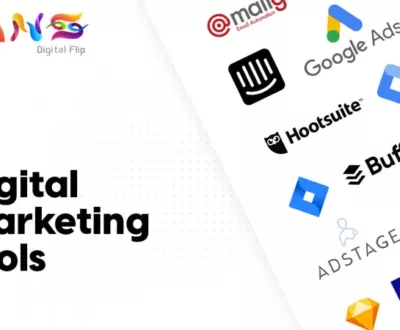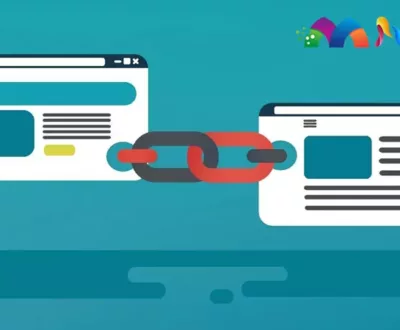
According to a survey, around 60.67% of all website traffic uses mobile devices. This means that most traffic comes from mobile users. If you are the one who gives more attention to desktop users than mobile users while creating your website, then your website may need to be more mobile-friendly. If your website isn’t mobile-friendly, it can affect the experience of mobile users.
So in this article, we are going to learn all about mobile SEO, including what mobile SEO is, why it is essential, and the 7 best mobile SEO optimization tips to build a mobile-friendly site. Let’s get started.
What Is Mobile SEO?
Mobile SEO is making websites more optimized for smartphones and tablets. It helps provide users with an excellent experience and achieve more website traffic from smartphone and tablet users.
Mobile SEO ensures the tracking of your website by search engine spiders and ultimately increases organic data on your website.
Why Is Mobile Optimization Important?
Mobile users have been increasing a lot, and most websites are being accessed using small screens. Moreover, we will discuss the differences between desktop and mobile searches in Google, the biggest search engine.
68% of all online web traffic comes from mobile devices, which goes to show you how important it is to optimize your websites smartphones.
Google’s Mobile-First Index.
According to Google’s mobile-first index, if users search for something on Google, the results are shown and ranked based on the mobile version of the content. Even if you’re searching from a desktop, it will give more priority to mobile-friendly content first.
Top 7 Tips to Make Your Website Mobile-Friendly
Here are the 7 best mobile SEO tips to make your website mobile-friendly.
1. Make Your Content Mobile-Friendly
A website for mobile users needs to make sense. You don’t want to show users a mobile website that makes no sense. All you have to do is design your website with mobile users in mind when you’re creating it. You can adopt the following strategies while dealing with the technical aspect of your website:
- Try to keep shorter paragraphs and sentences.
- Instead of including many sentences in sections, use three or four sentences per paragraph.
- Break the website’s content into elements and media, such as bullet points, numbered lists, quotes, images, and videos.
Including the above strategies on your website makes it more readable and organized for mobile users, who can easily read the content.
2. Include Mobile-friendly Navigation
Navigation like the menu bar, submit, and send buttons should be flexible and smooth for mobile screens. To include mobile-friendly navigation on your website, try to include one of the menu styles from the following one.
- Hamburger Menu
The hamburger menu or icon is a widely used menu style attached to most websites. It keeps your header menu organized. Visitors can easily find all options using the hamburger menu. It makes your website mobile-friendly.
For example, you can see the hamburger menu on Amazon.
- Kebab
The kebab is also known as the vertical three-dot menu. You can locate this menu at the top right or top of a screen or window. You can add some additional options in your menu section.
- Meatball
The Meatball Menu, a horizontal three-dot menu, is a horizontal three-dot menu, which has to be located in the upper-right corner of a screen or window. You can also repeat and reuse it on your website.
- Hamburger Different Variations
Apart from the main menu style of the hamburger menu, you can also include different variations on your website.
There are many alternatives to the hamburger menu, such as the hot dog, three-line, and more. Based on your choice, you can choose any of them and attach them to your website.
3. Don’t Block CSS, JavaScript, or Images
A few years ago, when it came to CSS, JavaScript, or images, some mobile devices could not support all of these elements. So web admins used to block one of them.
However, this issue is less prevalent now. You should continue all these elements because it helps GoogleBot understand all your files and determine if your website is responsive.
4. Enhance Page Speed For Mobile Users
Page speed, or page load time, refers to the total time your website takes to display the content on a specific page fully. If your website takes longer to load, it can have a wrong impression.
Here are some ways to enhance the page load time of your website:
- Enable Compression
Due to the large size of HTML, CSS, and JS files, your page may take time to load. That’s why it is better to reduce the size of your HTML, CSS, and JS files using any relevant software application.
On top of that, try to compress your images using any image optimization tool and get their size small without compromising on the quality of your pictures.
- Minify CSS, JavaScript, and HTML
HTML, CSS, and JS files, including comments, unnecessary characters, and spaces, can also impact your page load speed. So try to remove all these unnecessary things from your HTML, CSS, and JS files.
- Reduce Redirects
Redirecting one page to another takes time; visitors must wait for the HTTP cycle to complete. So it is better to reduce the additional redirects because they increase your page load time.
- Remove Render-blocking JavaScript
Try to remove render-blocking JavaScript code as it affects the HTML parsing process.
- Leverage Browser Caching
Browser caching refers to information associated with your stylesheets, images, JavaScript files, and more that helps users get less load time whenever they return to the website. Use a tool like YSlow to check the cache.
- Improve Server Response Time
Your server response time depends on many factors, such as the hosting provider you are using, the amount of traffic on your website, and the size of the content available. Late server response time is not mobile-friendly for mobile users. To improve the server response time, try to fix things like slow database queries, slow routing, or a lack of adequate memory.
- Use a Content Distribution Network
A content distribution network helps users transfer faster delivery of internet content. It improves internet loading time, loading of HTML pages, JavaScript files loading, and images and video content loading.
- Optimize Images
Try using only a few images on your website, not large pictures. This will affect the page loading time of the website. To reduce the size of images you can use image optimizer software to reduce the size of your images without reducing the picture’s quality.
5. Use Responsive Design
Responsive design is an approach to front-end website design that allows websites to display based on the screen sizes of the devices. This means that with responsive design, the website can adapt itself based on the viewing environment of the device’s screen.
6. Test and Monitor Your Site
Testing and monitoring your site at regular intervals can be a good practice. You can find and fix the errors on your website. It allows you to check any mistakes and issues with your website.
There are multiple online or offline tools available on the market. For example, GSC allows users to check and analyze their websites with a dedicated mobile usability report. It lets users see individual pieces and know which URLs are affected.
7. Track Rankings on a Mobile Device
You can track the rankings of your website on a mobile device. You can take help from appropriate software, enter your keyword, and check where your website ranks.
Sum-up
So we have covered almost everything about mobile SEO, including top tips to make your website mobile-friendly.
Having a mobile-optimized website makes sure that you’ll be able to attract more mobile visitors to your website.










